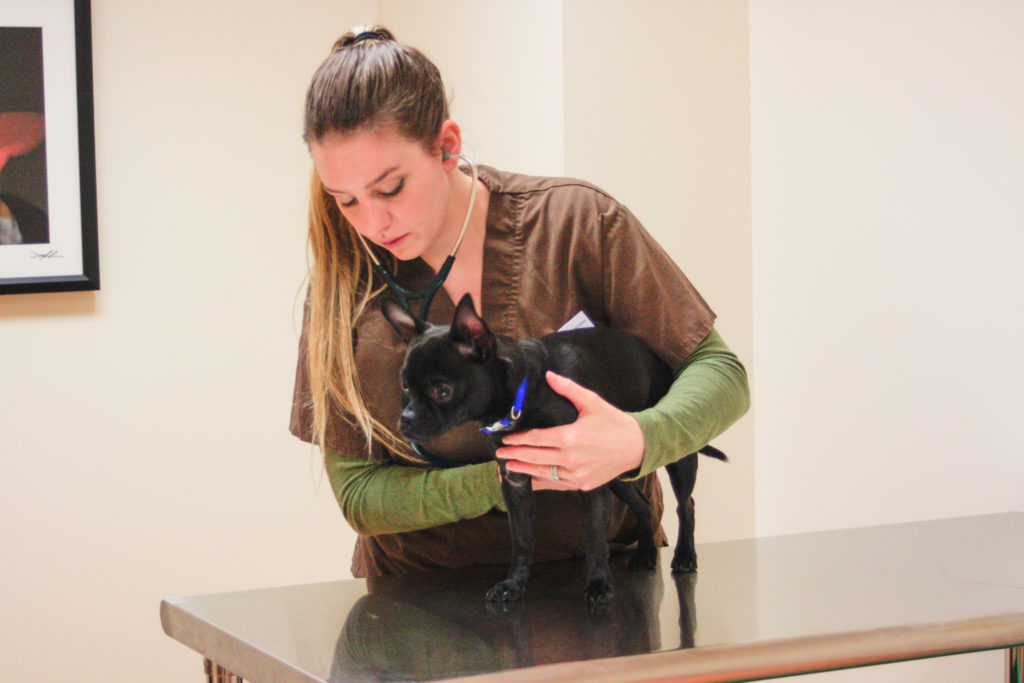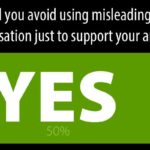Karel Minor, Humane Pennsylvania CEO
A Thesis
For over 100 year the animal welfare community has been approaching animal welfare as if it was the disease itself, and not merely a symptom of something else. It wouldn’t be the first time people have done that. Ulcers were thought to be caused by stress by the entire medical community until they were proved mostly be caused by the Helicobacter bacteria. A similar misdiagnosis was made for cervical cancer, which is now recognized to be overwhelmingly the result of an Human Papillomavirus infection. 
What if we’ve been similarly misdiagnosing animal cruelty? Humane Pennsylvania (HPA) believes this is now largely the case. We think that the cures for the underlying causes of much of the animal cruelty and suffering we see have already been discovered. In fact, much of the cure has been utilized, but without a clear understanding of how the cure should be applied, what the proper dose may be, and what the curative mechanism is.
Humane Pennsylvania, with the help of The Giorgi Family Foundation and its staggering $3.1 million dollar gift to HPA, is intend to change that. The Healthy Pets, Healthy Lives initiative is the vehicle by which HPA will test a new thesis on how we can end nearly all companion animal suffering in our community.
For over a decade HPA has worked to change the approach to saving animals and we’ve danced around three core ideas…
- That animals are not the problem to be solved, it’s the problems of animals which need to be solved.
- People aren’t the problem, they are often as much victims of the problems facing animals as the animals themselves.
- And most importantly, there is solution.
This final statement is important because for over a century, even as recently as 26 years ago when I started professionally in animal welfare, the assumption was that the problems facing animals were insurmountable and broadly untreatable.
Humane Pennsylvania has been developing a model of attacking animal suffering as a disease, one with underlying causes we could address and overcome. We’ve compared it to fighting a Polio or a Typhoid outbreak. Our newest approaches have been modeled in community and world health interventions. These approaches have been effective, but not fully curative. That’s because we didn’t quite have it right. Animal suffering isn’t usually a disease like Polio or Typhoid. It’s more akin to lung cancer or diabetes. It is a disease which presents as an acute illness but is the result of a constellation of underlying factors, factors which are often controllable.
Some people spontaneously present with lung cancer or type 2 diabetes. Nothing they have done or no way they have lived can explain why they got the disease. But we also know that 80%-90% of lung cancer is related to smoking. Lung cancer is very definitely a disease, but in 9 out of 10 cases the real “disease” is smoking cigarettes. Just as most type 2 diabetes is the result of issues in diet, weight, and exercise, factors which can be changed and negative impacts can be reversed.
So, too, is the case with most companion animal suffering. A small number are truly out of the blue, acute cruelty issues. It is hard to plan for a budding psychopath torturing his first dog. But most cases of animal suffering are not the result of things that are out of our community control. Most animal suffering is more akin to the slow progression to type 2 diabetes as a result of a build-up of the negative impacts of lifestyle, until one day the person is diabetic. Worse, like the “choice” to smoke, “choices” made for animals lead to acute danger for animals when they face life and death in a shelter or on the streets because of the actions of their caretaker.
What if we could offset these dangers to animals based on the choices and actions of people? Could we wipe out the life threatening animal welfare equivalent of diabetes or cancer by changing how people choose to live with and care for their animals? Yes, we can. Not the way animal shelters have been trying to do it for years, but we can.
Circles of Control and Limits of Capability
For years, animal shelters have been trying to make people do things out of our control. You should love your dog. You should keep your cat inside. You should adopt, sterilize your pet, feed them well, see a veterinarian, you should, should, should…. For people who were naturally inclined, this message took, and to great effect. Death in our shelters is down 80% in the past 40 years. Sometimes it took because the message resonated and sometimes because people just opted for the best path. Why do these messages and the cajoling we do work with some people and populations and not with others? Why do some people “choose” to care for their pets properly and others care for them in such a way that their animals end up languishing or dying in shelters?
For the same reason some people still get diabetes, or lung cancer, or become addicts, despite all the messaging out there telling them not to smoke, be sedentary, or take drugs. Simply telling someone what they should or shouldn’t do isn’t enough to change behavior, even behavior that may prove profoundly dangerous or damaging. Chronic disease or behaviorally caused acute disease can’t be lectured into remission. Treatment is needed.
Humane Pennsylvania believes that the animals entering shelters overwhelmingly do so because the humans they are attached to lack one or more of the following:
- Caretakers lack genuine knowledge or skills required to prevent animal suffering.
- Caretakers lack ready access to (or skills to access) better alternatives or resources to prevent animal suffering.
- Caretakers lack the positive habituation required to prevent animal suffering.
Why are these three points significant and what can they tell us about how to achieve rapid positive impacts?
First, many people lack the skills or knowledge required to properly care for a pet. This is not necessarily willful ignorance but can be a factor of socioeconomic factors. At Humane Pennsylvania’s veterinary hospitals we routinely treat the pets of people who do not have the experience many others do when it comes to navigating the animal healthcare network, let alone a clear understanding of exactly why successfully navigating that pet healthcare network is fundamentally good for animals. Let’s focus on just the veterinary piece of the puzzle.
Often these are people are at an educational or economic strata that has resulted in being ill equipped and inexperienced. Many of these people use the emergency room as their primary care health provider. They use school resources or the local free clinic as their pediatric resources. They’ve never experienced what so many take for granted, such as a long-term relationship with any healthcare provider, at a well-staffed and equipped office, and receiving reminder cards and texts. Let alone a modicum of respect. If people haven’t experienced this in their own family’s healthcare, why would we think they’d have experienced it with their pets? This lack of basic skills acquisition is a major hurdle for many, who do not even know what they don’t know about caring for a pet.
Second, let’s assume that our lecturing has worked and these folks who lack skills try to access resources. Where will they find them? Will they be able to afford them? Poverty is an enormous barrier to providing proper care to a pet. Simple distance and transportation is often enough to prove an insurmountable barrier. The City of Reading has about 90,000 people and it had only one veterinary hospital until HPA opened its hospital. By comparison, the rest of Berks County is home to no fewer than 20 veterinary practices for the remaining 320,000 odd people in Berks. That’s a one vet to 45,000 people in the Reading City and one vet to 16,000 people or less everywhere else. Some people simply have less access to good veterinary resources and all of the benefits they bring. Even those who do may not have the financial resources to afford the level and quality of care you and I may take for granted. That results in delayed care, sub-standard care, or potentially no care provided by even some of those who have the knowledge and skills to seek proper care out.
 Finally, good choices must become habitual. Cognitive behavioral changes are crucial. For the same reason people don’t keep New Year’s resolutions, it’s easy to not remember to take your pet to the vet every year. That’s why we get reminders. I’d never remember to go to the dentist let alone the vet if it wasn’t for text and mail reminders. But what if you move around a lot because you’re poor and reminder cards can’t reach you? What if you don’t use “regular” services that even provide these reminders because they are inconsistently offered? You never build up that habit, that “muscle memory.”
Finally, good choices must become habitual. Cognitive behavioral changes are crucial. For the same reason people don’t keep New Year’s resolutions, it’s easy to not remember to take your pet to the vet every year. That’s why we get reminders. I’d never remember to go to the dentist let alone the vet if it wasn’t for text and mail reminders. But what if you move around a lot because you’re poor and reminder cards can’t reach you? What if you don’t use “regular” services that even provide these reminders because they are inconsistently offered? You never build up that habit, that “muscle memory.”
If we want at risk communities to have those good habits, we need to be the people to help create them. We can’t fault people for not knowing what they need to do, how to do it, and then complain they don’t figure it out on their own. We need to not just educate them (we’ve been doing that for decades), not just provide generic access (we’ve been doing that for years), we need to actually help them to put that knowledge to use, in the places where it will help their pet, in a way that will stick, be repeated, become a generational expectation and habit. Does that mean reminding people to show up more than you or I might need? Yes. Does that mean driving some people to their appointments? Maybe. Does it mean possibly even bribing people to show up with incentives? Possibly.
And before anyone gets all high and mighty about helping bad pet owners: We aren’t helping them, we are helping their pets. Come to grips with that. If you don’t like people but you like animals you still need to work with the people.
Now, I just came at this from the angle of basic veterinary healthcare. Extend this to proper nutrition, behavioral counseling and training, general good care and husbandry, or what to do in emergencies. There are so many things that so many people don’t know how to do, don’t know how to access, and don’t have good habits for doing. We intend to try a new approach to change all that.
Same Pieces, Different Puzzle
Just as the causes of diseases have sometimes gone undiagnosed, sometimes the treatments for them go unrecognized. Sometimes these treatments were used for some other disease or in some other way but it turns out to be useful in new and novel ways. This is often the case for cancer or anti-viral drugs, which may be effective in treating new diseases or are even more effective against old ones when used in combination or in different doses.
That’s what we are doing in our Healthy Pets, Healthy Lives initiative. The pieces are very familiar. But we’ve recognized the puzzle has changes. So, what are the pieces of the puzzle?
- Pet sterilizations services to 100% of community need.
- Pet vaccination services to 100% of community need.
- Identification microchipping services to 100% of community need.
- Pet food insecurity program expansion to 100% of community need.
- Emergency/disaster response and sheltering capability for 1,000 animals at a time.
- Detailed and expansive data collection (complete pet and needs census).
These may all sound familiar. That’s because they are. The difference is the scope, scale, timing, and duration. HPA has identified a specific population to serve – Reading and Reading adjacent municipalities – to provide a focus of services. We are targeting and leveling the services – delivering differentiated services to the financially capable, the financially at risk, and the financially destitute – to deliver the right services in the right way to suit the needs of specific populations. And we have picked a time frame to deliver these services. This duration aspect is critical.
We seek to achieve this service delivery in just three years. We want the biggest bang for the buck and to deliver all these needed services all at once in a short time span. To follow the disease model, we are seeking to identify those suffering and deliver treatment, identify those as risk and deliver inoculation against disease, and to identify and combat any outbreaks as the happen. Whose animals are suffering now, whose animals are at risk for suffering, and whose animals might begin to suffer? By attempting to reach 100% of the need in a short span, we can then ramp down the need for ongoing high level efforts and costs.
We picked this above list of services because we think these are the key services which will drastically cut the number of animals entering shelters for preventable reasons, or allow animals to leave shelters faster. Our hope is a 50% decrease in intake from the service area. This reduction has been targeted because we know a 50% reduction allows shelters to suddenly make huge strides in life saving because they are no longer constrained by space and time to help the neediest of the truly homeless pets. Reaching this goal community wide – we’ve already done in in our own shelters – is what leads to reaching no kill community save rates of 90% or better. 
We also picked these services because they are largely veterinary based and we know, and research shows, that veterinary interventions and relationships are among the single biggest positive factors in a pet’s life and are most likely to keep them out of shelters as either surrenders or strays. There is a great deal of planning, thought, and research that went into this list and I’ve already gone on too long in this post to address them each now. However, in future posts I will be returning to each one to provide detailed explanations for why we believe these are the keys to successful implementation and outcomes of this initiative. And why we are betting $3 million dollars on this approach.
In A Nutshell
After 2,300 words, I’ll put this in a nutshell and give you the elevator speech (the explanation you can share with someone in the amount of time it takes you to ride with them in an elevator).
Animal shelters have done a lot in the last 50 years but we still have animals dying in shelters and suffering in our communities. We think that the right combination of existing approaches, used in new ways, scope, and scale can change that and make a big enough change that any community can reach true no kill lifesaving outcomes in an extremely short period of time. We are spending $3 million dollars in three years to deliver targeted services; spay/neuter, vaccination, microchipping, and pet food supports to people and pets who need it, to 100% of community need. We believe that this will decrease shelter intake from the target community by 50% and that will allow save rates in our local shelters to sky rocket. Berks County will become a no kill county, not because we get them all adopted, but because we keep most pets from ever entering a shelter in the first place. Berks will become the first No Suffering County.*
Will it work? Beats me, but we really think it will and we are basing that optimism on data, research, and experience. The Giorgi Family Foundation, and many other lead donors on this project have enough confidence in our vision and plan to support it with their hard earned money. Hundreds of staff and volunteers trust it enough to give us their valuable time and talent. I hope you will consider giving us some of each.
This is the start of the effort and the conversation. Be a part of it and be a part of our attempt to achieve something new and wonderful. And save lots and lots of animals from needless suffering and death.
*P.S. Lancaster County, don’t feel left out! Many of the models that the Giorgi Grant will help create will be rolled out in Lancaster for pets and people there, too. Of course, what we need is some visionary donor leadership in Lancaster County like the Giorgi’s provided in Berks. If you’re that visionary donor, call me….
 Lauren joined the Humane Pennsylvania team in June of 2016 as the Events & Donor Relations Manager. With a Bachelor’s Degree in Journalism and a minor in Recreation, Park, and Tourism Management from Penn State University, she was eager to focus her talents on unique fundraising and event planning opportunities.
Lauren joined the Humane Pennsylvania team in June of 2016 as the Events & Donor Relations Manager. With a Bachelor’s Degree in Journalism and a minor in Recreation, Park, and Tourism Management from Penn State University, she was eager to focus her talents on unique fundraising and event planning opportunities.









 Working Cats are cats which can’t successfully be placed in a traditional home adoption setting but are candidates for non-traditional placements. These cats may have behavioral challenges such as having limited socialization (but not being “fully” feral) or have litter box issues. They are often wonderful cats that just don’t particularly dig being hugged, or dig using the litter box as appropriate.
Working Cats are cats which can’t successfully be placed in a traditional home adoption setting but are candidates for non-traditional placements. These cats may have behavioral challenges such as having limited socialization (but not being “fully” feral) or have litter box issues. They are often wonderful cats that just don’t particularly dig being hugged, or dig using the litter box as appropriate.




